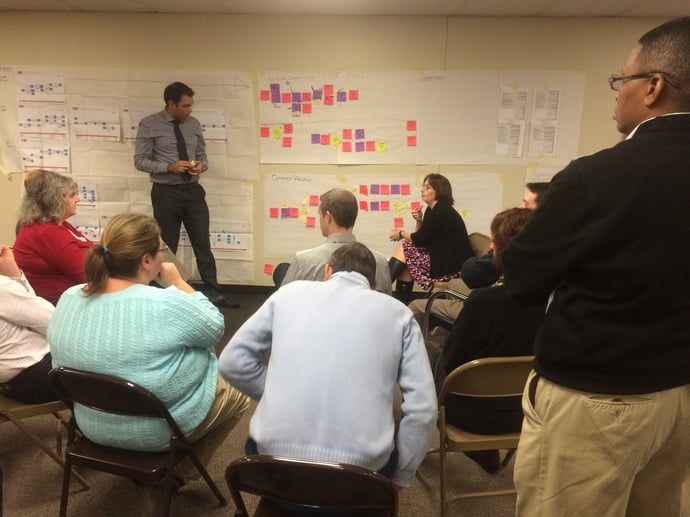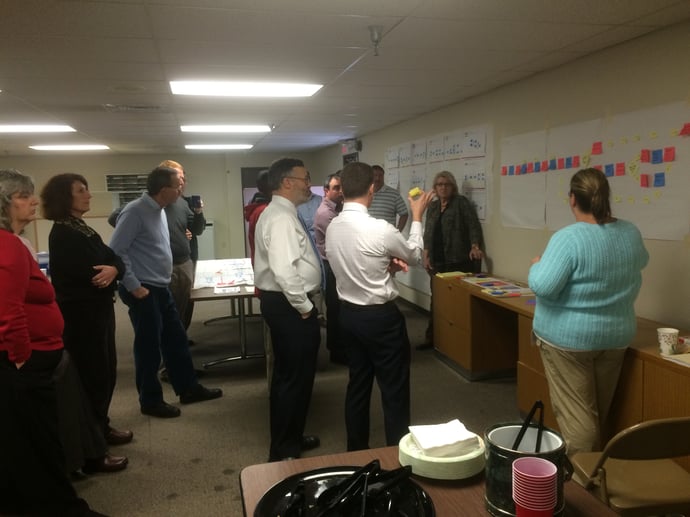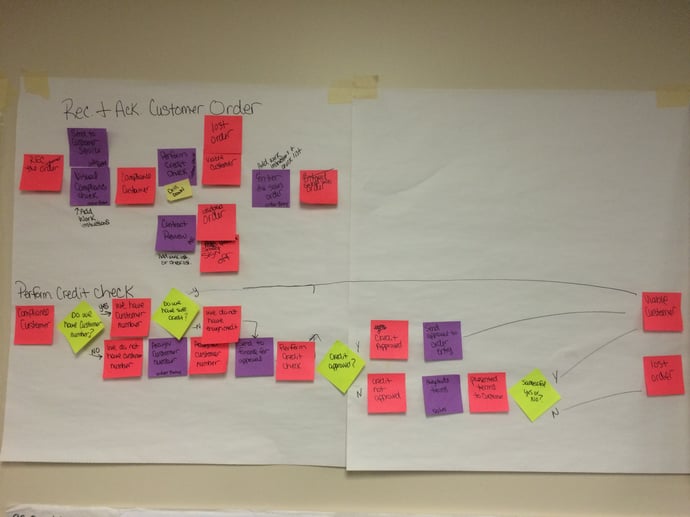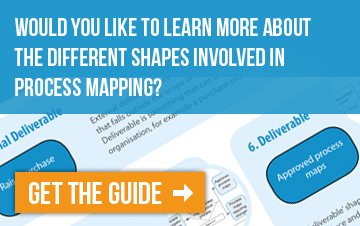Just like Liam Neeson in the movie Taken, a process mapping pro needs to have a very particular set of process mapping skills.
Process Mapping is an essential part of any process improvement project but how do you know where to focus your improvement efforts if you don’t have your processes mapped?
These are the key elements to getting process mapping right...
- be an accurate reflection of how the process flows
- contain the specific level of detail required for your project
- have relevant and accurate data
- be clear and easy to understand
To ensure that you are ticking all of these boxes and more, please take a look at this  , which shows you all you need to know to get your process mapping project started down the right path.
, which shows you all you need to know to get your process mapping project started down the right path.
To ensure success, the right person in your organisation needs to be responsible for creating the process maps. Getting the right person can be a tricky task, as you may not have the budget, or resources to have one full time employee doing this work, but it would help if the selected person or team have the following skills or characteristics...
1. Research:
Knowing exactly what you are looking for and how to find it is a skill more business improvement professionals need to have. Before embarking on any kind of process mapping project, you need to know:
- Why you are process mapping in the first place
- The scope of your project - is your process mapping merely part of a larger project implementation? Do you have a management system, methodology, process library or existing framework your project needs to fit in with?
- Whether you are going to need a paper-based approach or host your process maps in a digital archive?
- What is actually necessary to make your process maps useful, usable and used in your organisation.
2. Attention to detail:
One of the most important process mapping skills, is consistently creating the content at the level that is required for the project and required by the end users of the process maps. A process mapper needs to be able to traverse these different detail level requirements to deliver exactly what has been asked of them. This means that they will need to be able to create top level management business processes, as well as not being afraid to dive into the detail when necessary.
If the process maps are for improvement purposes, attention to detail is particularly important, as the more you are able to break activities down into their component parts, the greater the possibilities for adding and using data (required for process analysis and improvement).

3. A 'Never Say Die' Attitude
A process mapper should be tenacious and determined. Quite often when conducting process discovery sessions, there will be a burst of initial energy and output, however as times goes on, this energy may decrease or disappear altogether. It is the responsibility of the process mapper to finish what they started. There are two distinct phases in process map creation, the initial process discovery work, and then the inputting of this information in to a process library.
Determination and tenacity are crucial as once you have finished with the subject matter experts (SMEs), this information all needs collating and transferring into shiny process maps, which is a completely different skill to facilitating process discovery sessions.
4. The Ability to 'Herd Cats'.
The idiom 'herding cats' is often used when referring to the most difficult of jobs and while process mapping workshops don't have to be difficult, when you have a sceptical team it's important to make the experience as painless as possible by keeping the sessions 'high energy', not lingering too long on any one Activity, keeping the process relatively high level, having an end-point established and selling your team on the potential benefits moving forward - it also can't hurt to throw in a few pizzas along the way.

5. Organisation
It helps to be organised as a process mapper. A process mapper should be clear about their own working processes and have all the necessary collateral in place to keep them organised. I like to have a different folder for every one of my projects and keep them all separate.
I also try to keep printing to a minimum to decrease the amount of paper I need to carry around. For the 'always be prepared' process mapper, you can carry around packs of multi coloured sticky notes and a couple of Sharpies (just in case spontaneous process mapping happens to break out in your presence).

6. Getting the Right Knowledge Out of the Right People, for the Most Accurate Process Capture
One of the most necessary skills in process capture, is getting the right information out of the process experts in the process mapping workshops, but also the vision necessary to piece it all together when multiple job roles are concerned. This required vision and a lot of energy when sat at your desk creating the process maps! I find that black coffee and regular breaks help to keep you sane whilst dragging and dropping the days (and nights) away.

7. Positive outlook
It helps to have the end goal in mind at all times. There will be times when a process mapper is drowning in a sea of sticky notes, of every colour and size, but visualising the end goal and keeping in mind that your organisation or customer will be in a much better place as a result of the work you are carrying out will keep you going. The work is great fun, and is a transferable skill, which every organisation is in need of at some point!
The good thing about skills is that they can be acquired with training and the right knowledge. This  explains the shapes commonly used in process mapping and how you can use them in your own process mapping project...
explains the shapes commonly used in process mapping and how you can use them in your own process mapping project...
Related Articles:
Process Mapping How To: A Practical Solution to Stop You Getting Lost
How To Run A Process Mapping Workshop (Video)
Process Mapping: 6 methods to create process maps
Process Hierarchies: Process Mapping Without the Complexity [Video]
The Top 10 Benefits of Process Mapping
Written by Brad Fagan
Brad joined Triaster in 2016 as our Content Marketing Executive hailing all the way from Middle Earth (the film version, not the book) – New Zealand. Brad’s video skills soon resulted in new weekly Triaster videos and his individual touch in some of the Connector and blog articles. In June 2018 Brad moved to Germany with his wife Lynn.
